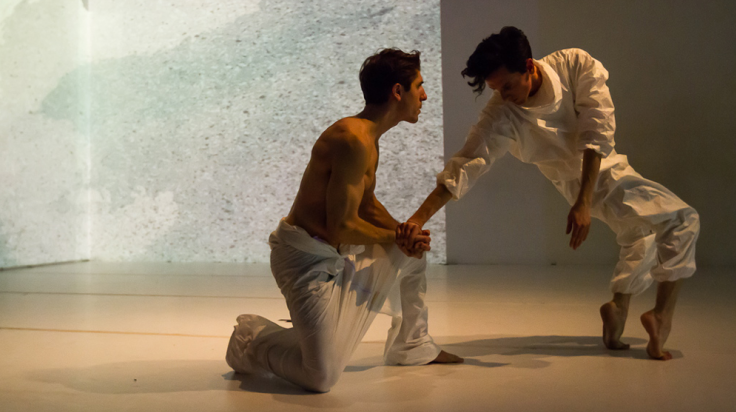available for purchase
at this time.
#StaffChat: Eco-Friendly Theatre Practice
#StaffChat posts feature articles and news that the C1 team discusses as part of our weekly all-staff meeting. We’d love to hear your thoughts too — hit us up on Facebook or Twitter!
♦♦♦♦♦
Given the current state of climate change, it’s important to examine how we, as artists, address this enormous issue, both within our work itself and in our means of doing theatre. This week, we’ll be spending some time looking at the current environmental impact of our processes, and thinking about ways to become more sustainable.
We’re looking at a few articles to help guide our conversation:
- — HowlRound’s recent series on Theatre in the Age of Climate Change, specifically the articles: “Walking The Awkwardly Heroic Yet Often Depressing Path of Near Impossible Catastrophe Evasion Through Kick-Ass Poetics” by Elizabeth Doud and “Where Is the Hope?” by Jeremy Pickard
- — “Alas, Poor Planet” by Mark Fisher from The Guardian
- — ”Eve Ensler Talks and Talks and Talks Trash” a review of OPC in The Boston Globe
Fisher’s article in The Guardian articulates some of the aspects of theatre that make it so unsustainable:
“Keeping the fuel bills down is not the only environmental challenge faced by the theatre industry. Think of all those sets scrapped at the end of a run. Think of the hotel nights and minibus miles generated by companies on tour. Consider the audiences travelling into town. What of the paper for the flyers, posters, programmes and scripts? Then there are the stars – Don Johnson, Jessica Lange – who jet in from the US to see their names in high-wattage West End lights. Should we wonder at the scarcity of green-themed plays, when the theatre business itself has such a voracious appetite for resources?”
The piece goes on to detail some theatres, like London’s Young Vic, that are implementing green audits to identify areas for improvement on the sustainability front. Some companies are also using the production’s text itself to explore the issue, staging work with themes that directly address environmental impact.
Similarly, Pickard’s article in HowlRound speaks about Superhero Clubhouse, a company specializing in eco-theatre. All their programming deals with issues around sustainability, but to avoid overly didactic work, they approach projects with large, abstract ideas before getting practical:
“Early in the process of making an eco-play, after a dose of research, my collaborators and I generate an “impossible question”—one that is extremely difficult to answer, even for an environmental expert. For example, in EARTH (a play about people), our question is, “Should we have children?” This is a question that sparks a provocative conversation about overpopulation, but is impossible to definitively answer personally or communally. Allowing the question to be “impossible” steers my collaborators and me clear of didacticism and oversimplifications of science, and also leaves room for audiences to grapple with an environmental issue on their own terms. After forming our impossible question, we place temporal, narrative, physical, and scenic limitations upon ourselves.“
As a case study, Eve Ensler’s play OPC (recently produced at A.R.T) is also interesting to consider. The play raises questions about how radical environmentalism clashes with mainstream culture, while also exploring the niche culture of freeganism — a practice that, in theory, produces zero novel waste. The play precipitated dramatic changes in design and execution at A.R.T. in an effort to make the production more sustainable, but the theatre faced enormous obstacles in the process. Sadly, a majority of their environmentally conscious changes did not last, and they have returned to using programs, conventional lighting, and other practices that were changed to support a more sustainable process. It is worth considering what ultimately led the theatre to revert to old ways, and it was likely many factors. How were pricing and budget affected by new processes? Was there buy in across departments? Were the A.R.T. attendees receptive to the changing experience?
Eco-friendly production processes can still be integrated even when the text doesn’t explicitly call for it. Many of the practices in the above two examples could be replicated in a standard process. Superhero Clubhouse’s use of environmental policy experts is worth considering, especially as a company that frequently brings in experts or community partners for productions. A green audit might also be something to implement, at least in an attempt to identify the most urgent needs.
However, as we attempt to become more sustainable, our major obstacles come down to resources. Some eco-friendly materials are often more expensive, and when cost effective options do exist, they frequently take more time to source.
As noted in Pickard’s article, “The climate movement is so complex that it needs to be poetic to affect change in consciousness, and penetrate the depths of our seemingly impossible current paradigm—and shake it up.” So what can we do to prevent waste in an art form that is ephemeral by nature, that requires enormous amounts of manpower and resources to stage, and that has extremely quick turnaround?
Here are some more questions we will consider together:
- — How do you take a global issue and make it personal?
- — How can C1 call our community to action and act as a better steward to our environment?
- — What are our biggest obstacles to implementing a more eco-friendly production process?
- — What production and non-production processes at C1 are most sustainable? Least sustainable?
- — What are some initial steps we could take given our current space and budget limitations?
